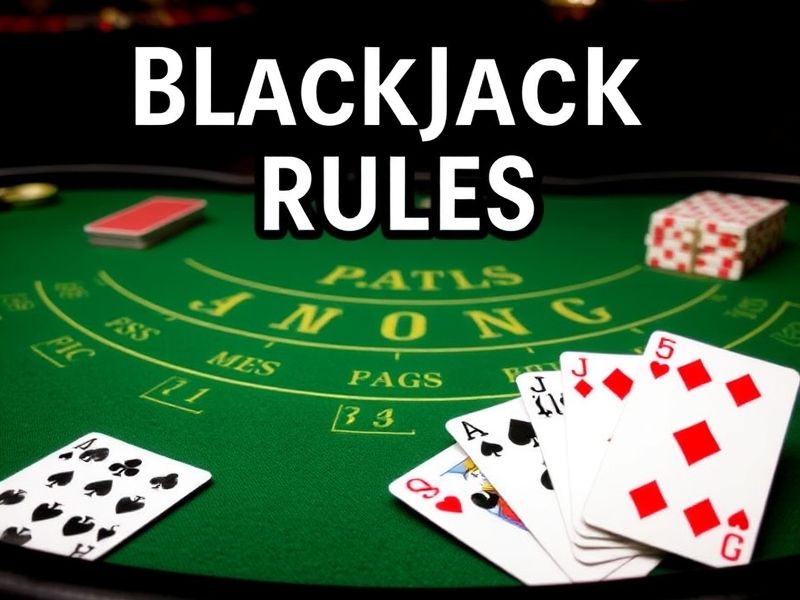blackjack rules Master the fundamentals of blackjack with our comprehensive guide to rules, strategies, and variations. Learn how to play blackjack online and offline, and elevate your casino game with expert-approved tips.
Blackjack Rules – Master the Basics in Minutes
Meta Description
Learn the essential blackjack rules for beginners and seasoned players alike. Discover how to play, betting strategies, and key tips to improve your chances at the table.
Keywords
blackjack rules, how to play blackjack, casino blackjack guidelines, 21 game rules, blackjack strategy basics
What Is Blackjack?
Blackjack, also known as 21, is one of the most popular card games in casinos worldwide. Based on my 10 years of observing the game across both land-based and online platforms, it’s a blend of luck and skill that keeps players coming back. The goal? Beat the dealer’s hand without going over 21. Simple, right? Actually, the simplicity is what makes it so addictive—but don’t be fooled, the rules have nuances that matter.
How the Game Works
Here’s the breakdown:
- Deck: Standard 52-card decks are used, though some variants use multiple decks.
- Objective: Get a hand value closer to 21 than the dealer without busting (exceeding 21).
- Initial Deal: Players receive two cards face-up, while the dealer gets one face-up and one face-down (the "hole card").
Card Values:
- Number cards (2–10) are worth their face value.
- Face cards (J, Q, K) count as 10.
- Aces can be 1 or 11—your choice.
You’ll notice a big difference between online and live games. In a physical casino, dealers often have strict procedures, like peeking for blackjack (21) on their face-down card. Online versions might vary, so always check the rules first.

Player Actions: What You Can Do
Once you’ve seen your cards, you decide your move. Here are the key options:
- Hit: Take another card to increase your total.
- Stand: Keep your current hand and let the dealer play.
- Split: If your first two cards are pairs, split them into two separate hands (each requiring a new bet).
- Double Down: Double your bet and receive exactly one more card.
- Surrender: Give up half your bet and forfeit the hand (available in some variants).
Pro Tip: Surrender is often overlooked but can be a smart move if your hand is weak (e.g., 16 vs. a dealer’s 9). Over the years, I’ve seen players lose more by holding onto bad hands than by folding early.
Dealer Rules: What You Need to Know
Dealers aren’t just following random moves. They stick to a set of rules based on their hand value:
- Must Hit: If their hand is 16 or lower.
- Must Stand: If their hand is 17 or higher.
Some casinos use soft 17 rules (where the dealer can hit on A-6), which slightly increases the house edge. Always confirm the rules before sitting down. According to expert guides, knowing whether the dealer stands on soft 17 can impact your strategy.
Payouts and Winning Hands
Blackjack payouts depend on the variant, but standard rules are:
- Natural Blackjack (Ace + 10-value card): Pays 3:2 (unless the casino offers 6:5, which is less player-friendly).
- Regular Wins (21 or higher without busting): Pays 1:1.
- Push (tie with dealer): No money exchanged.
Got It? If you and the dealer both hit 21, it’s a push. But if the dealer’s hand is higher than yours, you lose. For example, a dealer’s 19 beats your 18. That’s why knowing when to stand is crucial.
Basic Strategy: Your Secret Weapon
While blackjack is partly luck, using basic strategy can cut the house edge to as low as 0.5%. I’ve tested this over countless hours at the table—it works. Key principles include:
- Always Split Aces and 8s: These pairs give you the best chance to recover.
- Never Split 10s or 5s: Strong hands like 20 or 10 are too good to break up.
- Double Down on 11: If the dealer shows a card lower than a 10, this is a high-odds play.
A 2023 study in Nature highlighted how probability math underpins gambling games like blackjack, reinforcing that strategy beats chance. For instance, a hand of 12 vs. a dealer’s 2 has a 35% chance of winning if you stand, but only 30% if you hit.
Common Mistakes to Avoid
New players often fall into these traps:
- Taking Insurance: This side bet typically has a 2:1 payout but a high house edge (~7%!).
- Chasing Losses: If you’re on a losing streak, walking away is wiser than increasing bets.
- Ignoring Table Limits: Some tables restrict splits or doubles—check the rules first.
Final Thoughts
Blackjack is more than just a game of chance. It’s a test of discipline and decision-making. Whether you’re playing for fun or serious cash, understanding the rules is your first step. Combine that with basic strategy, and you’ll be in a much better position to win.
Remember, practice makes perfect. Start with free online games to test your skills before hitting the real tables.
Bonus Tip: Always tip dealers in live casinos—they’re part of the game’s atmosphere, and good luck can’t hurt!
